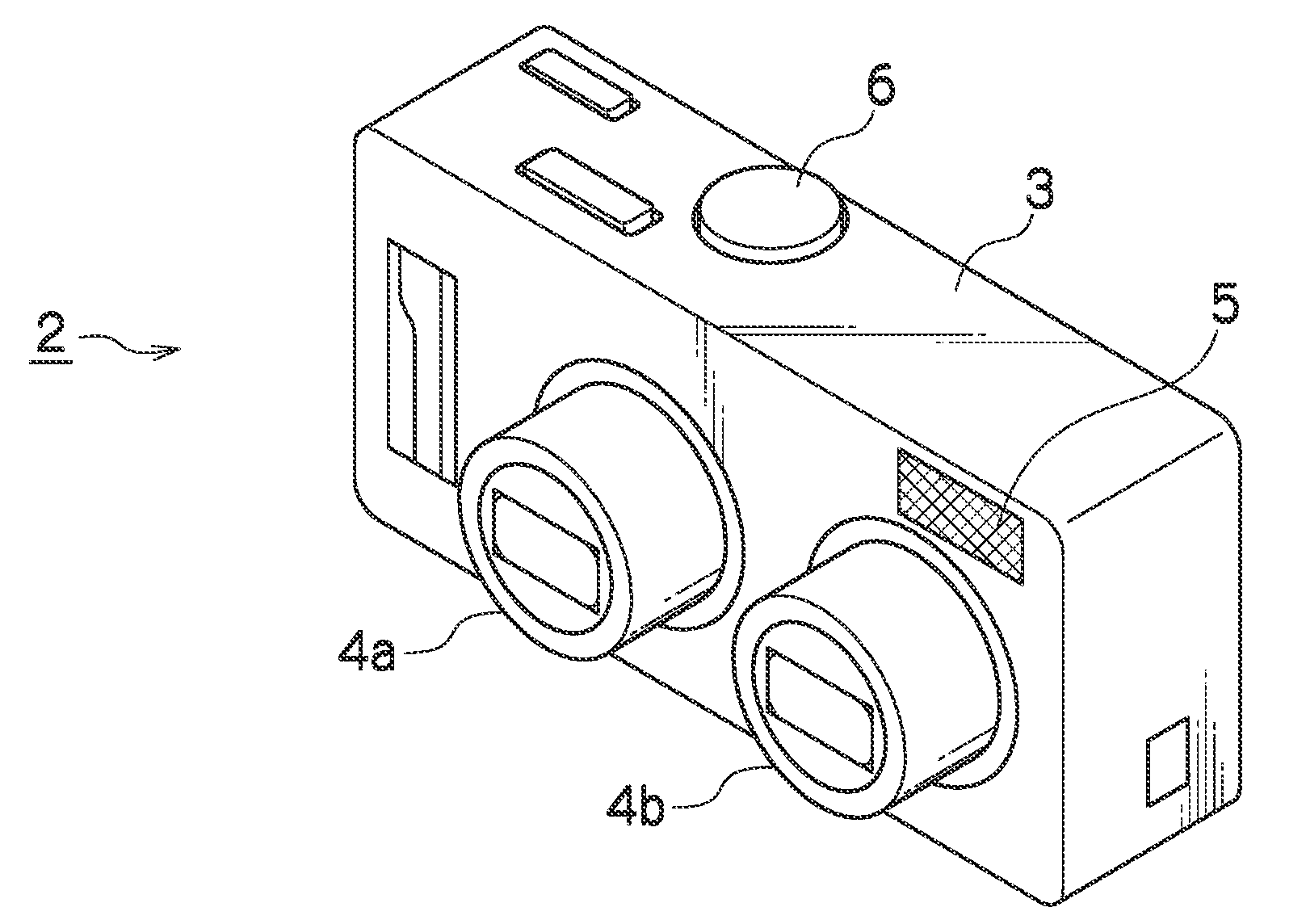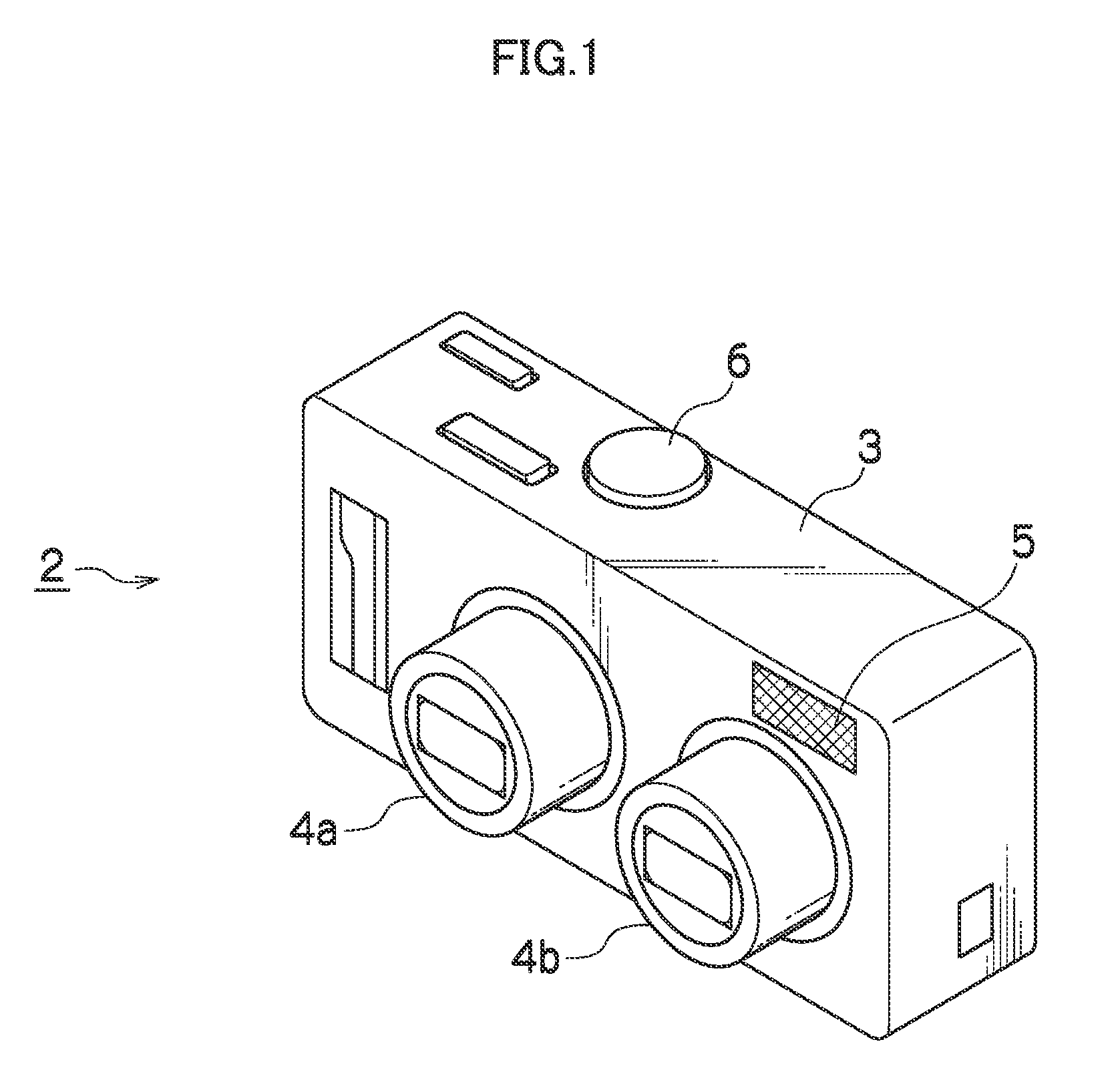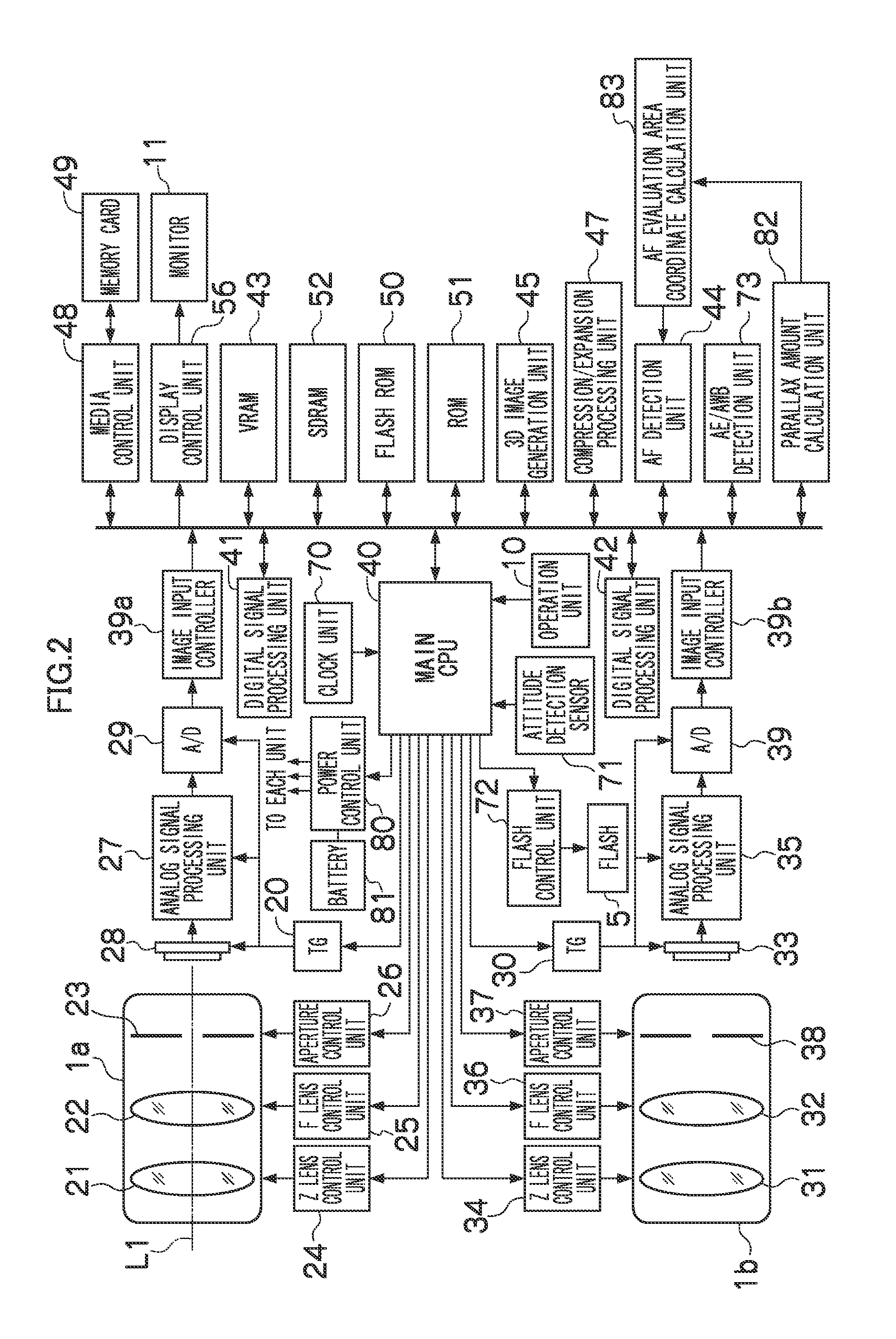Imaging device, imaging method and recording medium
- Summary
- Abstract
- Description
- Claims
- Application Information
AI Technical Summary
Benefits of technology
Problems solved by technology
Method used
Image
Examples
first embodiment
[0057]FIG. 1 illustrates a front side perspective view of a camera 2. In FIG. 1, on the front surface of the camera 2, a first lens barrel 4a which includes a first image taking optical system 1a, and a second lens barrel 4b which includes a second image taking optical system 1b are built in. In addition, a flash 5 and the like are exposed on the front surface of the camera 2. The first and second lens barrels 4a and 4b are provided side by side at a regular interval in a horizontal direction, and extend forward from a camera main body 3 at the time of an image taking mode, and are contained in the camera main body 3 when power is turned off or at the time of an image reproduction mode. Moreover, on the upper surface of the camera 2, a shutter button 6 used for a shutter release operation is provided.
[0058]On the back surface of the camera 2 (not illustrated), an operation unit 10 including a zoom button, a menu button, and a cursor button, and a monitor 11 are provided. According t...
second embodiment
[0111]It is assumed that, if there is no subject at the intersection point (also referred to as “cross point”) between the optical axes L1 and L2 of the first image taking optical system 1a and the second image taking optical system 1b (see FIG. 6), an AE process of the spot exposure metering system is executed. If it is assumed that a spot metering area is set at the same position (for example, the image central portion) in both the first image taking optical system 1a and the second image taking optical system 1b as the conventional art, the subjects included in the spot metering areas in the first and second image data are different due to the effects of the parallax, and thus, exposures of the first image taking optical system 1a and the second image taking optical system 1b, which are set by the AE process, are also different. If an exposure level is greatly different between the left and right images, the appropriate stereoscopic image cannot be obtained, which makes the viewe...
third embodiment
[0123]It is assumed that, if there is no subject at the intersection point (also referred to as “cross point”) between the optical axes L1 and L2 of the first image taking optical system 1a and the second image taking optical system 1b (see FIG. 6), the AE process of the weighted average metering is executed. If it is assumed that a weight for appropriate exposure value calculation corresponding to each small region partitioning the image is set as the same in both the first image taking optical system 1a and the second image taking optical system 1b as the conventional art, a subject portion included in the small region at the same position is different between the first and second image data due to the effects of the parallax, and thus, the exposures of the first image taking optical system 1a and the second image taking optical system 1b, which are set by the AE process, are also different. If the exposure level is greatly different between the left and right images, the appropri...
PUM
 Login to View More
Login to View More Abstract
Description
Claims
Application Information
 Login to View More
Login to View More - R&D
- Intellectual Property
- Life Sciences
- Materials
- Tech Scout
- Unparalleled Data Quality
- Higher Quality Content
- 60% Fewer Hallucinations
Browse by: Latest US Patents, China's latest patents, Technical Efficacy Thesaurus, Application Domain, Technology Topic, Popular Technical Reports.
© 2025 PatSnap. All rights reserved.Legal|Privacy policy|Modern Slavery Act Transparency Statement|Sitemap|About US| Contact US: help@patsnap.com



